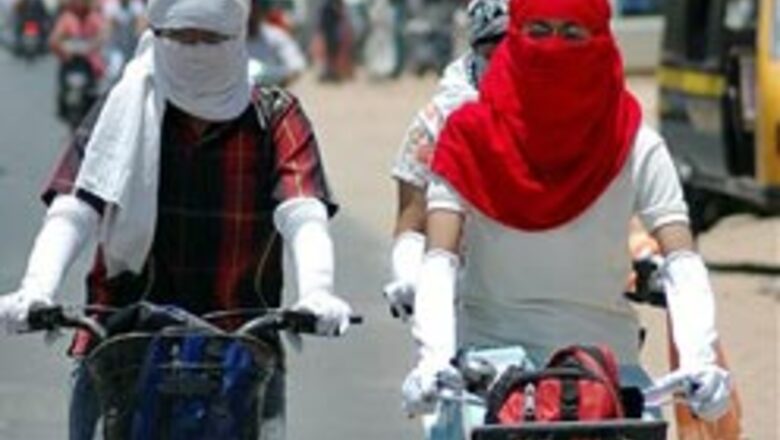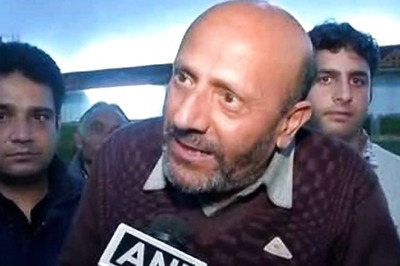
views
New Delhi: A pleasant dip in temperature on Monday evening brought a much-needed relief for the people in Punjab, Haryana and Chandigarh, reeling under sweltering heat when the maximum temperature in the states fell between two to three degrees.
However, frequent power cuts and water supply at low pressure continued to dog the people in the region.
The MET office predicted dust or thunder storms with light rains at isolated places in the region in the next 24 hours.
The heat wave in northern India may also abate in three days as likely rains and thunderstorms will lower temperatures, the MET office said.
Even as there was decline in the maximum temperature, the mercury hovered one to seven degrees above normal in most parts of the region.
Chandigarh recorded a high of 37.8 degrees Celsius, one degree above normal.
Ludhiana reeled under a high of 40.6 degrees celsius and Patiala recorded a high of 39.5 degrees Celsius.
In the hills of Himachal Pradesh, Shimla had a high of 28.8 degrees Celsius, seven degrees above normal, and Bhuntar had a high of 35.7 degrees celsius, six degrees above normal.
Heat kills 34
At least 34 people have died from scorching weather and authorities in the Capital ordered an early start to summer holidays to protect children from the heat wave.
Most of the victims are from Uttar Pradesh with 16 people reported dead since late April, followed by Orissa in the east where 11 fatalities have been recorded in the past three weeks.
In Delhi, thousands of school children started their holidays a week earlier as the maximum temperature hit 44.4 Celsius on Monday, four degrees above the normal average at this time of the year.
"The government of Delhi has ordered the closure of government schools and government-aided schools. So students do not suffer from heat stroke or dehydration," Delhi's Education Minister, Arvinder Singh Lovely, said.
PAGE_BREAK
The effects of the heat wave have been compounded by Delhi's summer shortage of water and power.
Government offices have been told to turn off air conditioners by 1830 hrs (IST) and residents have been asked not to use their air conditioners until 2100 hrs (IST).
In Orissa, where the temperature touched 46 degrees Celsius late last week, authorities said hospitals were reporting dozens of admissions of people with sunstroke.
"The high temperature and humidity has made my life miserable," said marketing executive Anurjaya Dhal, who lives in Bhubaneswar.
In Uttar Pradesh, where long power cuts and water shortages are common, hospitals were asked to be ready to deal with a jump in sunstroke cases.
The hottest temperatures were being reported from Rajasthan in the west where Sri Ganganagar town close to the Pakistan border recorded its maximum temperature of 47.6 degree Celsius on Sunday.
Local media reported seven heat wave deaths in the state but officials said no one had died due to dehydration or sunstroke.



















Comments
0 comment